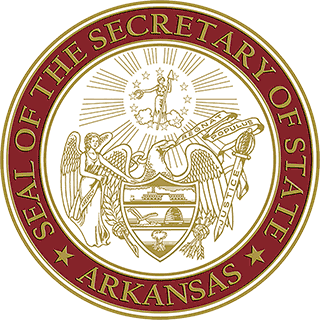State Governors 1917-1933
State Governors 1917-1933
Charles Hillman Brough
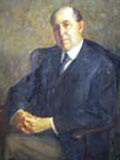 Born: July 9, 1876, at Clinton, Mississippi
Born: July 9, 1876, at Clinton, Mississippi
Died: December 26, 1935, at Washington, D.C.
Buried: Roselawn Memorial Park, Little Rock
Served: 1917-1921
Educator and orator Charles H. Brough graduated from Mississippi College in 1894 and earned a Ph.D. degree in history, economics and jurisprudence from John Hopkins University in 1898. Brough taught European and American history, economics, ethics, German, and philosophy at. Mississippi College, Hillman College, and the University of Arkansas before entering politics in 1913, briefly campaigning to replace resigned governor Joe T. Robinson. In 1915 he resigned from the University of Arkansas and began to campaign in earnest for the governorship, which he won in he following year. Under Brough's leadership, progressive reform reached its high point in Arkansas: a state reformatory for women was founded, a girl's industrial school was established, and an illiteracy commission was created. At Brough's urging a compulsory school-attendance law was enacted, and the Legislature offered limited financial aid to mothers with dependant children, as well as medical care for the needy. A law was passed allowing women to vote in all primary elections, and the Arkansas Corporation Commission was created. Brough acted decisively to restore order in the wake of the Elaine race riots of 1919 and created a state commission to promote inter-racial harmony. After leaving office, he worked as a Chautauqua lecturer, served as director of the State Public Information Bureau from 1925 to 1928, and chaired the Virginia- District of Columbia Boundary Commission from 1934 to 1935.
Thomas Chipman McRae
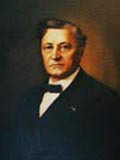 Born: December 21, 1851, at Mount Holly, Arkansas
Born: December 21, 1851, at Mount Holly, Arkansas
Died: June 2, 1929, at Prescott, Arkansas
Buried: De Ann Cemetery, Prescott
Served:1921-1925
Arkansas's 26th governor earned a law degree from the Washington and Lee University in 1872 and was admitted to the Arkansas bar in 1873. He served in the Arkansas House of Representatives from 1877 to 1879 and was a U.S. Representative from Arkansas's Third Congressional district from 1885 to 1903. From 1903 until 1920 McRae remained active in Democratic Party politics while immersing himself in his law practice and banking. In 1917, McRae was a delegate to the convention which drafted a new constitution for the state, ultimately rejected by voters in 1918. In 1920, he reluctantly entered the gubernatorial race, one of nine Democrats seeking the post. On November 2 he was elected Governor and won a second term in 1922. During McRae's first term the Legislature blocked most of his initiatives, which included a severance tax for school support, a state-directed highway construction plan, and a worker's compensation program. During his second term, however, McRae met with more success: a personal income-tax law was adopted, as was a school-funding plan using revenues from severance taxes and a new tobacco tax. A new highway construction program was begun, one which reformed the corrupt practices of its predecessor. Other achievements of the McRaue administration include the establishment of the State Tuberculosis Sanitarium for Negroes and the creation of the office of State Geologist. After leaving office, McRae returned to the law and banking.
Thomas Jefferson Terral
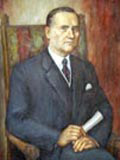
Born: December 21, 1882, in Union Parish, Louisiana
Died: March 9, 1946, at Little Rock, Arkansas
Buried: Roselawn Memorial Park, Little Rock
Served: 1925-1927
Thomas J. Terral was born Louisiana and attended the University of Kentucky; in 1910 he earned a law degree from the University of Arkansas. Terral entered politics in 1911, serving until 1915 as assistant secretary of the Arkansas Senate. Terral was deputy state superintendent of public instruction from 1912 to 1916, except during the periods in 1913 and 1915, when the general assembly was in session. He was elected secretary of state in 1916 and served until 1921. In 1920 Terral ran for governor and lost, but with a respectable showing; in 1924 he ran again and won. During his term, 11 honorary commissions were abolished and in their place was created a salaried three-member board of charities and corrections. The office of Commissioner of Insurance and Revenue, and Arkansas's first state park at Petit Jean Mountain were established. Also during Terral's administration, construction began on a new state hospital in Little Rock, and a constitutional amendment was enacted that increased the number of supreme court judges from five to seven. He ran unsuccessfully for re-election in 1926 and subsequently returned to his law practice in Little Rock.
John E. Martineau
 Born: December 2, 1873, in Clay County, Missouri
Born: December 2, 1873, in Clay County, Missouri
Died: March 6, 1939, at Little Rock, Arkansas
Buried: Roselawn Memorial Park, Little Rock
Served: 1927-1928
Arkansas's 28th governor was born in Missouri but graduated from the University of Arkansas in 1896, briefly taught school and then enrolled in the University's law school at Little Rock, from which he graduated in 1899. In 1902 Martineau was elected to the Arkansas House for the first of two terms. He was appointed chancellor of the First Chancery Court in 1907 and served in that capacity for twenty years, acquiring a reputation for fairness and plain speaking. In 1924 Martineau campaigned unsuccessfully for governor; in 1926 he was successful. During his single term, the honorary governing boards for state institutions (dissolved under Terral's administration) were restored, the Confederate Pensions Board was created, and the Normal School of the Ozarks was established. The Tri-State Flood Commission was formed by Louisiana, Mississippi and Arkansas in response to the spring floods of 1927; Martineau was selected as its president. The Martineau Road Plan was his most lasting achievement. It authorized state aid for highway construction within city limits and bond issuance for highway construction. On March 2, 1928, Martineau resigned from the governor's office to accept the appointment to the bench of the Federal District Court of Eastern Arkansas, where he served until his death.
Harvey Parnell
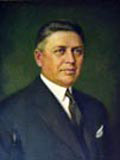 Born: February 28, 1880, at Orlando, Arkansas
Born: February 28, 1880, at Orlando, Arkansas
Died: January 16, 1936, at Little Rock, Arkansas
Buried: Roselawn Memorial Park, Little Rock
Served: 1928-1933
Harvey Parnell attended Warren High School and worked variously as a clerk, book-keeper, dry goods merchant and farmer before entering politics in 1919 when he began the first of his two terms in the Arkansas House of Representatives. Parnell also served in the Arkansas Senate from 1923 to 1925 and was elected lieutenant governor in 1926. On March 4, 1928, Governor John E. Martineau resigned from office to accept a federal judgeship and Parnell assumed the duties of governor. In 1928 he was elected governor in his own right and was re-elected in 1930. During his tenure, the Henderson State Teachers College in Arkadelphia was established, and revenue was used for programs to upgrade the state school system and a state highway fund was established well as the State Bureau of Commerce and Industry, but a consultant-derived plan for governmental reorganization failed to win legislative support and the Parnell administration was slow to respond to the state's Depression-induced needs; by 1932, Parnell's business-oriented style and self-help recommendations had few supporters in the Capitol or without. After leaving office, Parnell returned to his farming interests but remained in public service: he spent his remaining three years as an appraiser for the Reconstruction Finance Corporation.



